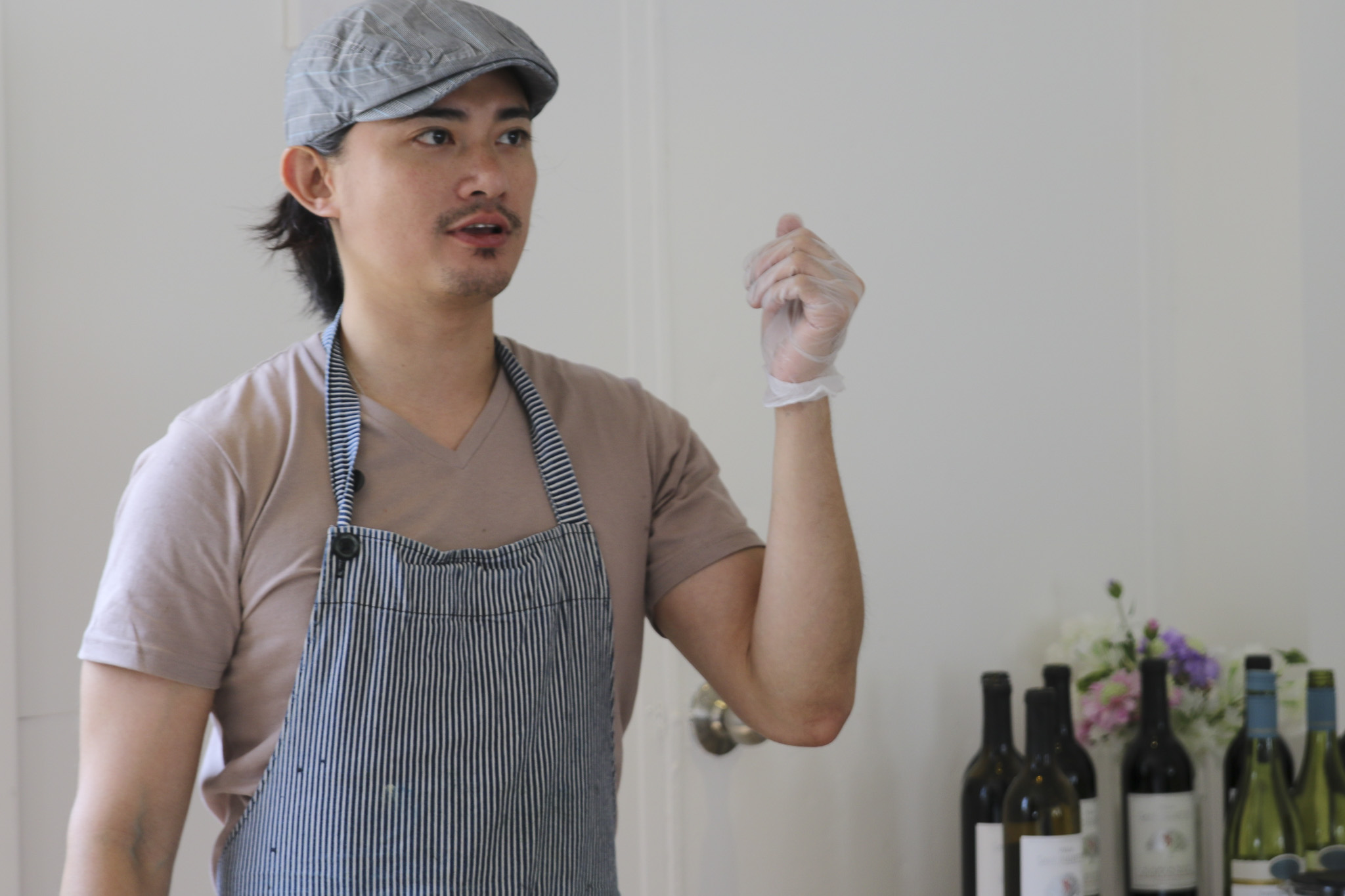Cultivating Micro Algae: Site Visit and Lunch
Article and photos by Michele Wisla
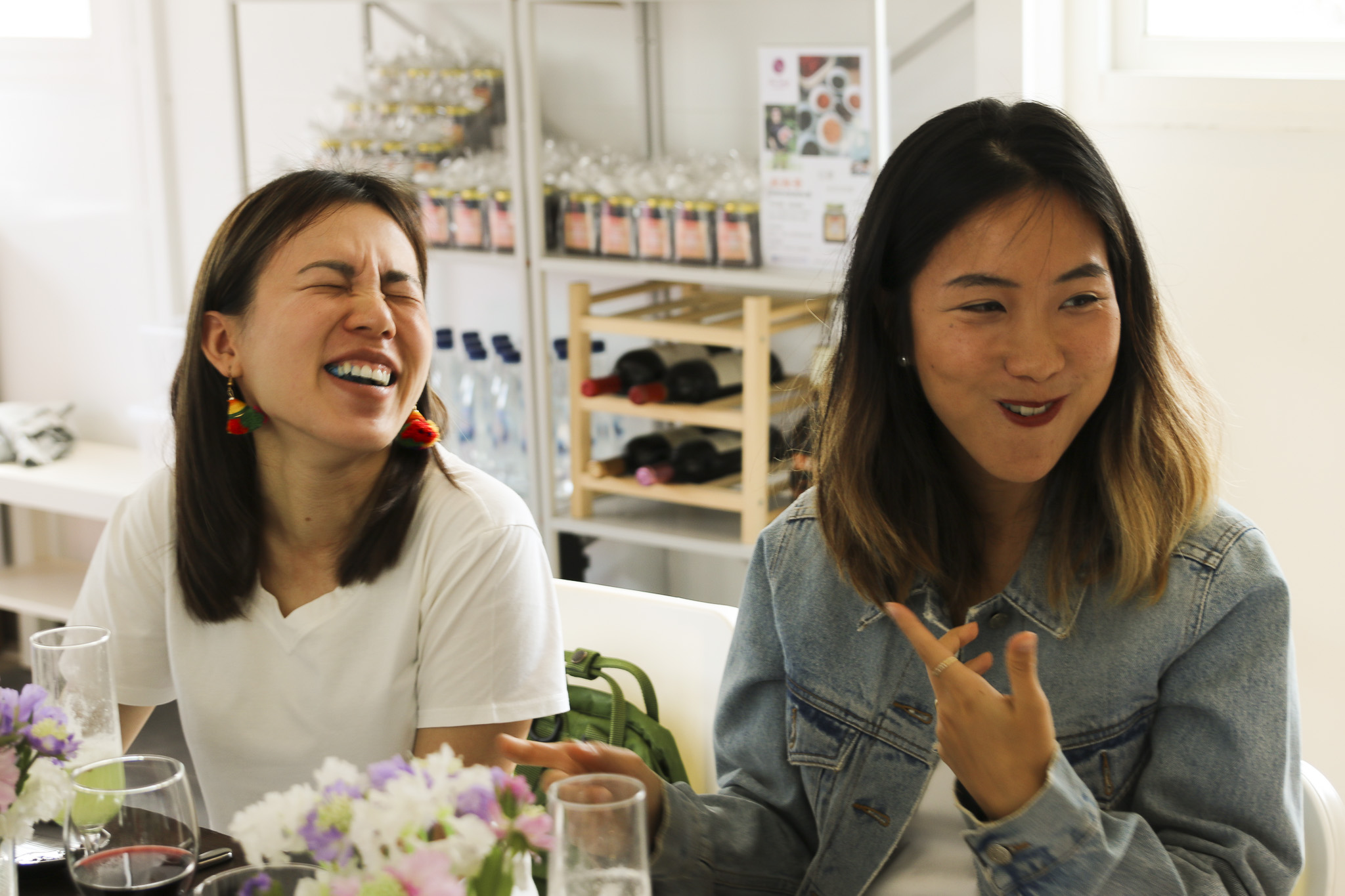
“Let food be thy medicine and medicine shall be thy food.”
– Hippocrates
Hippocrates is known as the first person to say that diseases were caused naturally from food and lifestyle rather than from superstition or punishment from the gods, so he would have been excited to be amongst the Slow Food Hong Kong group visiting Geb Impact’s micro algae site in Sheung Shui on 21 April 2018.
Geb Impact Technology is a Hong Kong-based company focused on expanding the reach of micro algae into the marketplace. They work behind the scenes designing production processes for micro algae, filling the needs of an emerging healthy lifestyle market. They serve various industries in this space – from skin care, cosmetics to culinary sectors.
Micro algae are one of the fastest growing plant cells in nature. It needs only water, sunlight and nutrients in the correct environment to grow and it is a good source of protein – giving it great potential as an alternative food to meat.
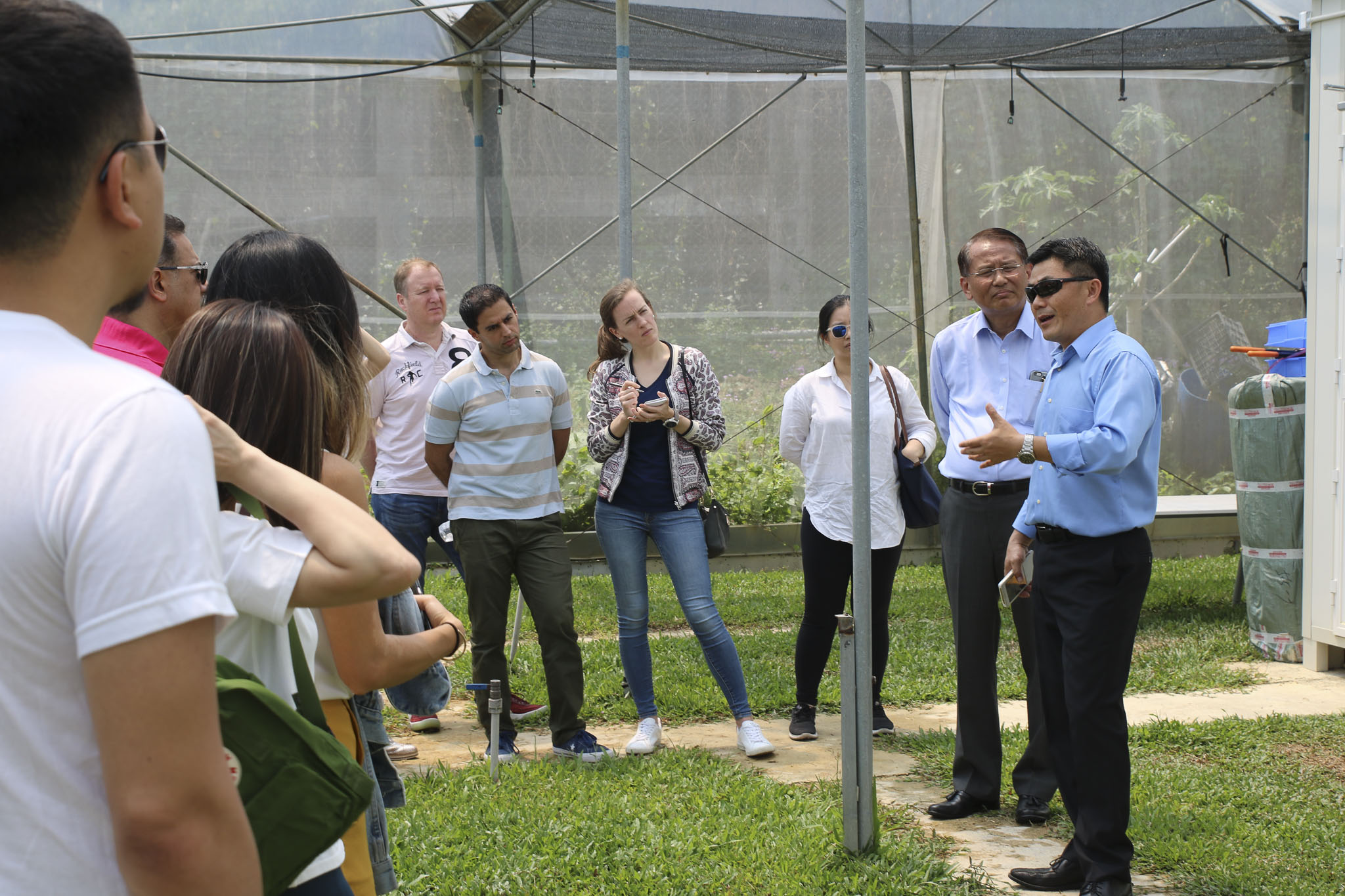
In a special collaboration, Geb Impact teamed up with Justin Chan – nutritionist, columnist and chef – to take us on their site visit, followed by a visit to a farm nearby and finally for a 6-course farm-to-table lunch that featured micro algae as a cooking ingredient.
During the Geb Impact site visit we learned micro algae is a single cell organism and one of the first forms of life on earth. Micro algae are a sibling to macro algae and one type of macro algae is seaweed. Different places have different species micro algae, of which spirulina is one of the best known. Another, astaxanthin is known to be over 500 times more potent than vitamin E and 6,000 times stronger than vitamin C. While explaining some of the health benefits of micro algae, Geb Impact showed us their environmentally responsible water tubes and explained their focus on developing cost effective sustainable methods to grow the algae.
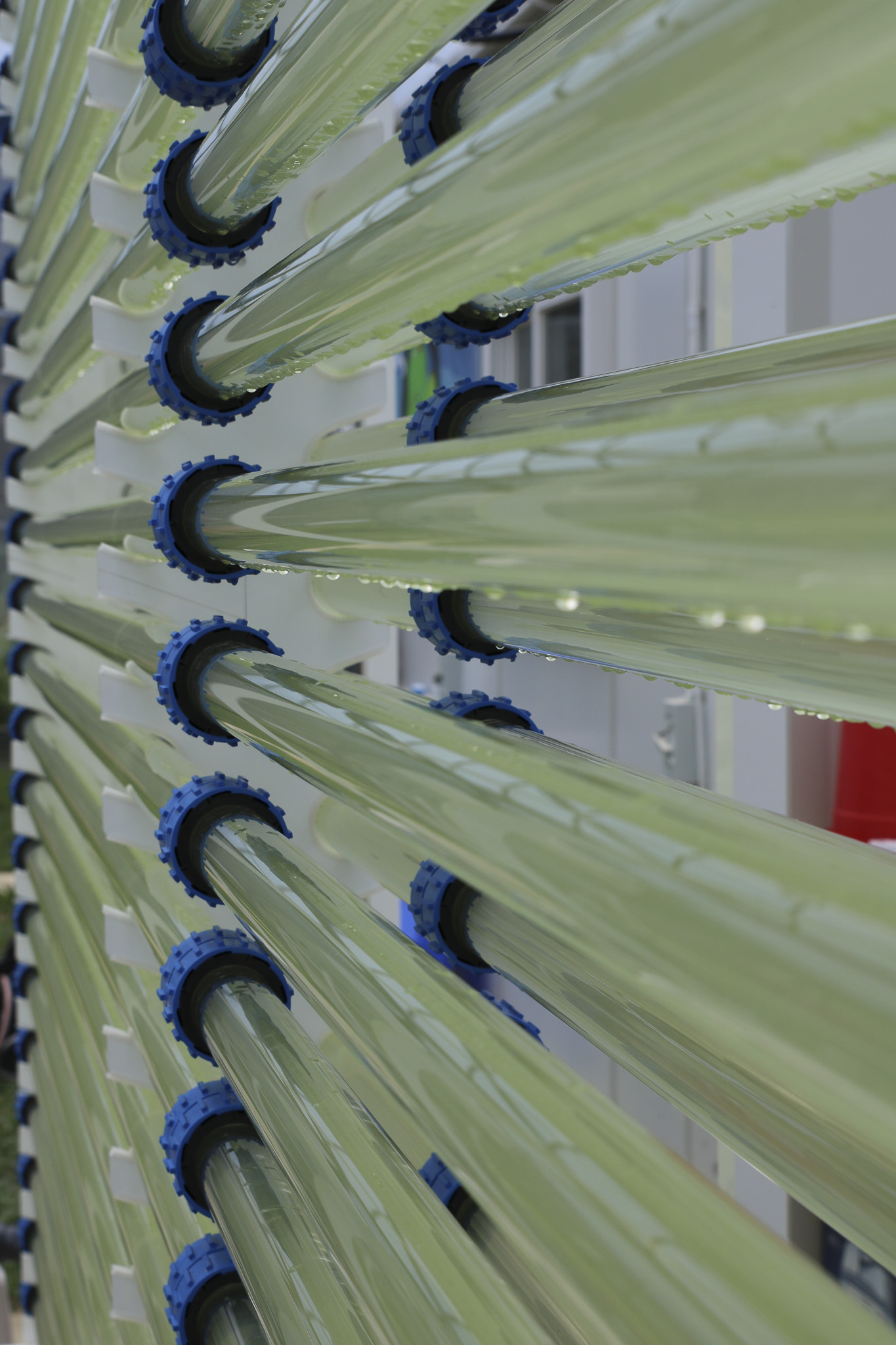
Geb Impact wasn’t the only cutting-edge company in the office park. Walking over to lunch at Si Ting Gourmet, we made a stop at AgriGaia Biomimicry, the first bio-mimicry farm in Hong Kong. Many of the vegetables for our lunch came from the farm. The company is both organic and mimics the rainforest environment. They keep an enclosed space to facilitate that environment which also avoids acid rain and pollution. The plant itself grows strong and healthy in this environment and it is healthy to eat. They’re also conserving water in this space compared to standard farm irrigation methods by using a sub-irrigation system, similar to an underground soaker hose. Because it’s underground, the water goes directly to the roots saving 50-80% more water than a standard irrigation system.
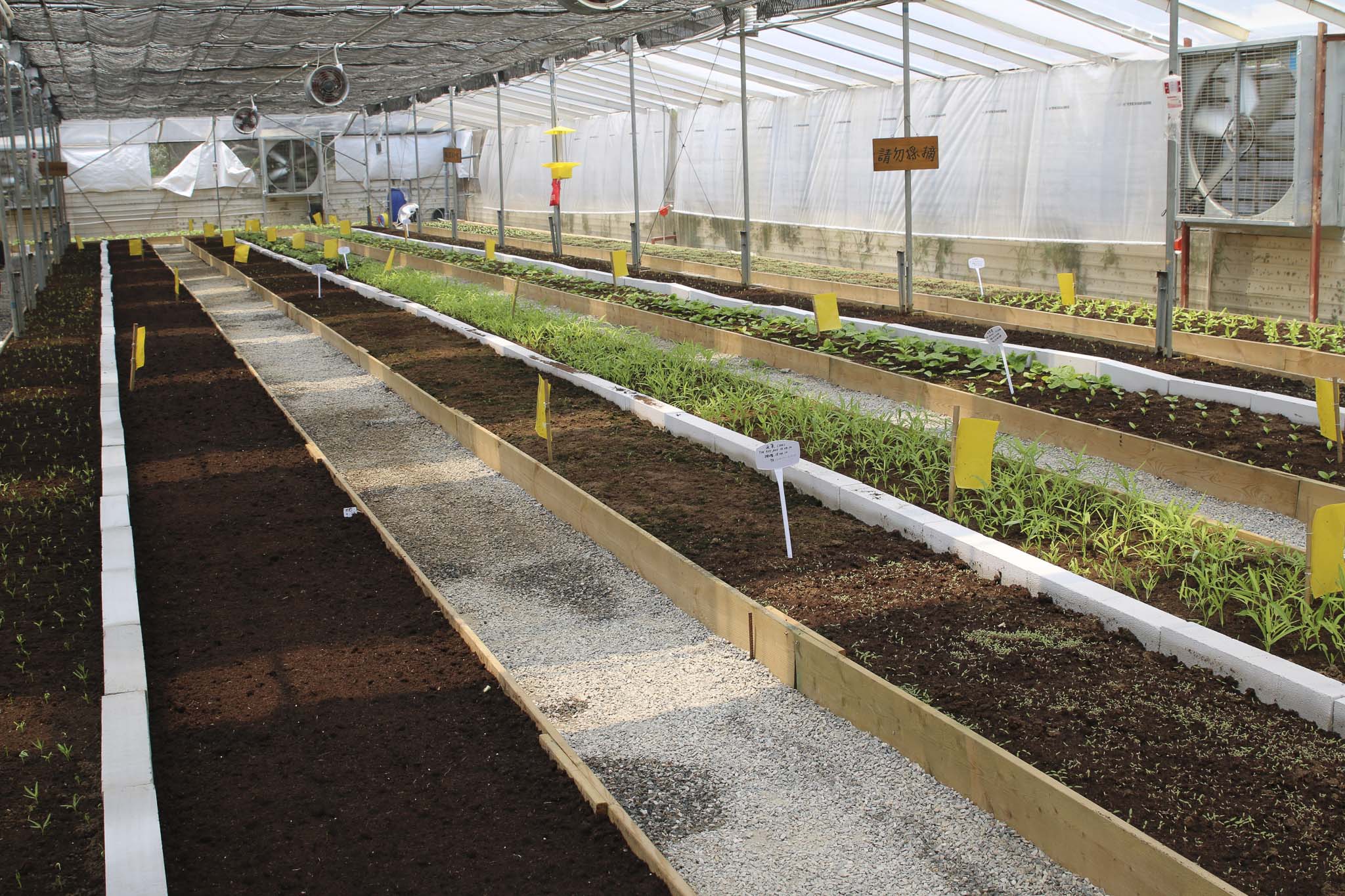
Finally arriving at Si Ting gourmet, who allowed the talented Chef Justin to take over their kitchen for this special private lunch, we were first greeted with a cooling herbal welcome drink. Our second welcome drink was a Sparkling Wine with Green Garden Caviar that used green spirulina algae. It also had the fun addition of a type of pop-rock added that looked like tiny gold nuggets.
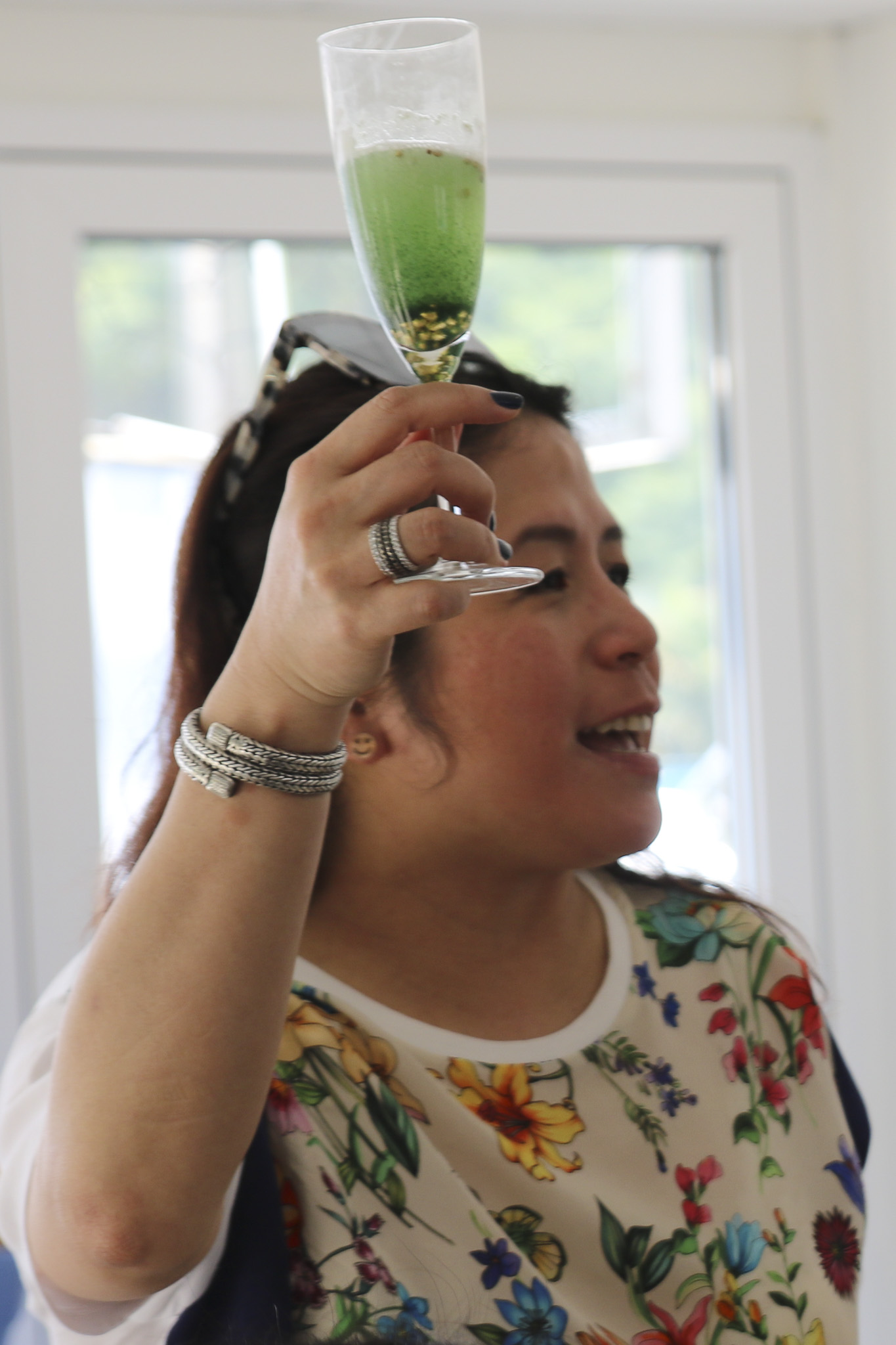
The first course used euglena algae citrus cream and was simply called ‘Roots’. With a base of mesclun salad it contained barley, Chinese artichoke, ma la cress (the special leaf of the hua jiao pepper) and the root of the violet wood sorrel oxalis flower. A pinkish-purple herbal flower, the root was crispy and sweet. A light, refreshing starter course.
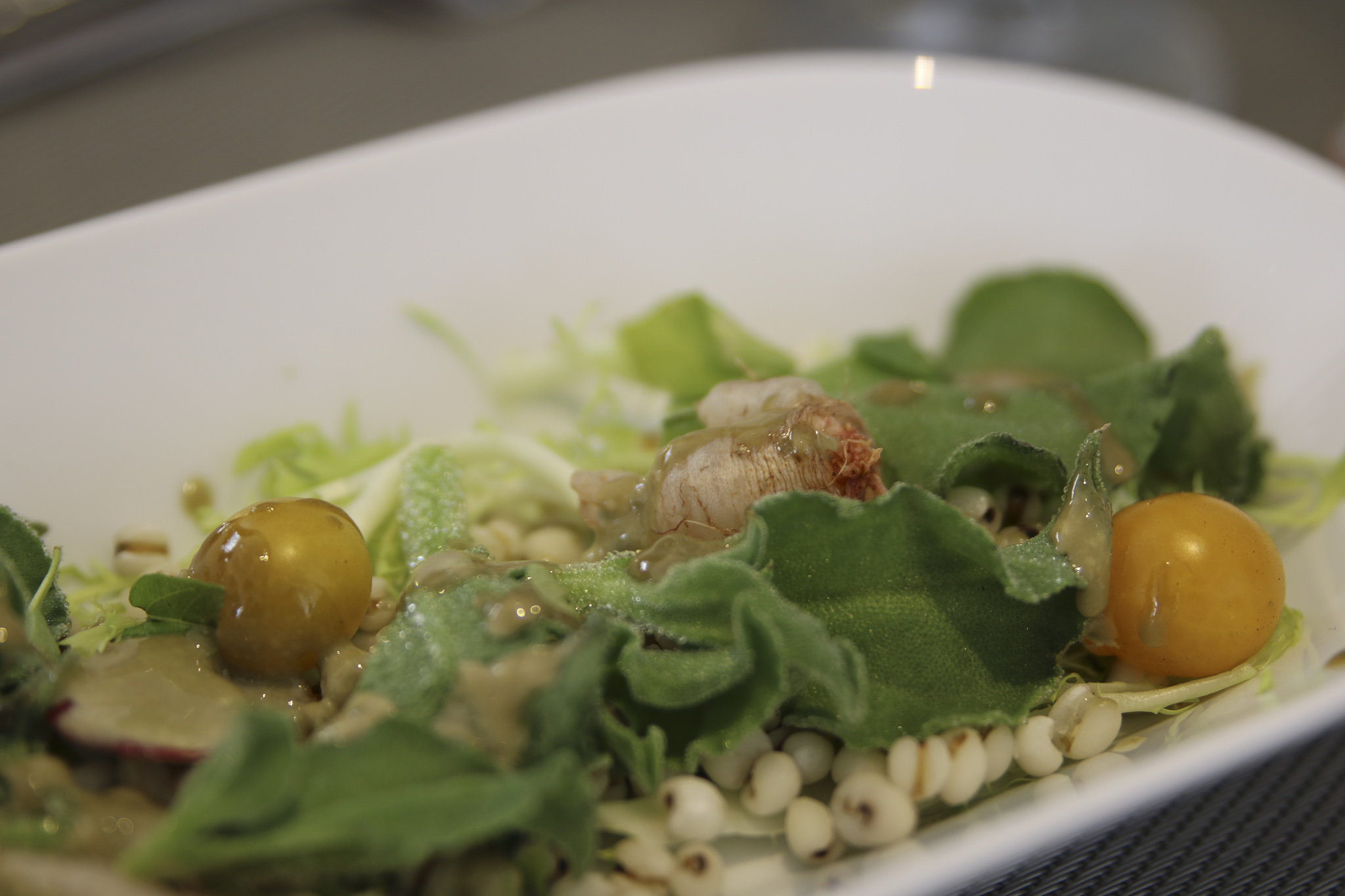
The second course was Chill Smoked Salmon Crostini Toast with Blue Lagoon Spread. It used blue spirulina algae mixed with cream cheese to make a bright blue color. It was outstanding given the color combo of rich pinkish fatty salmon and blue fatty cream cheese!
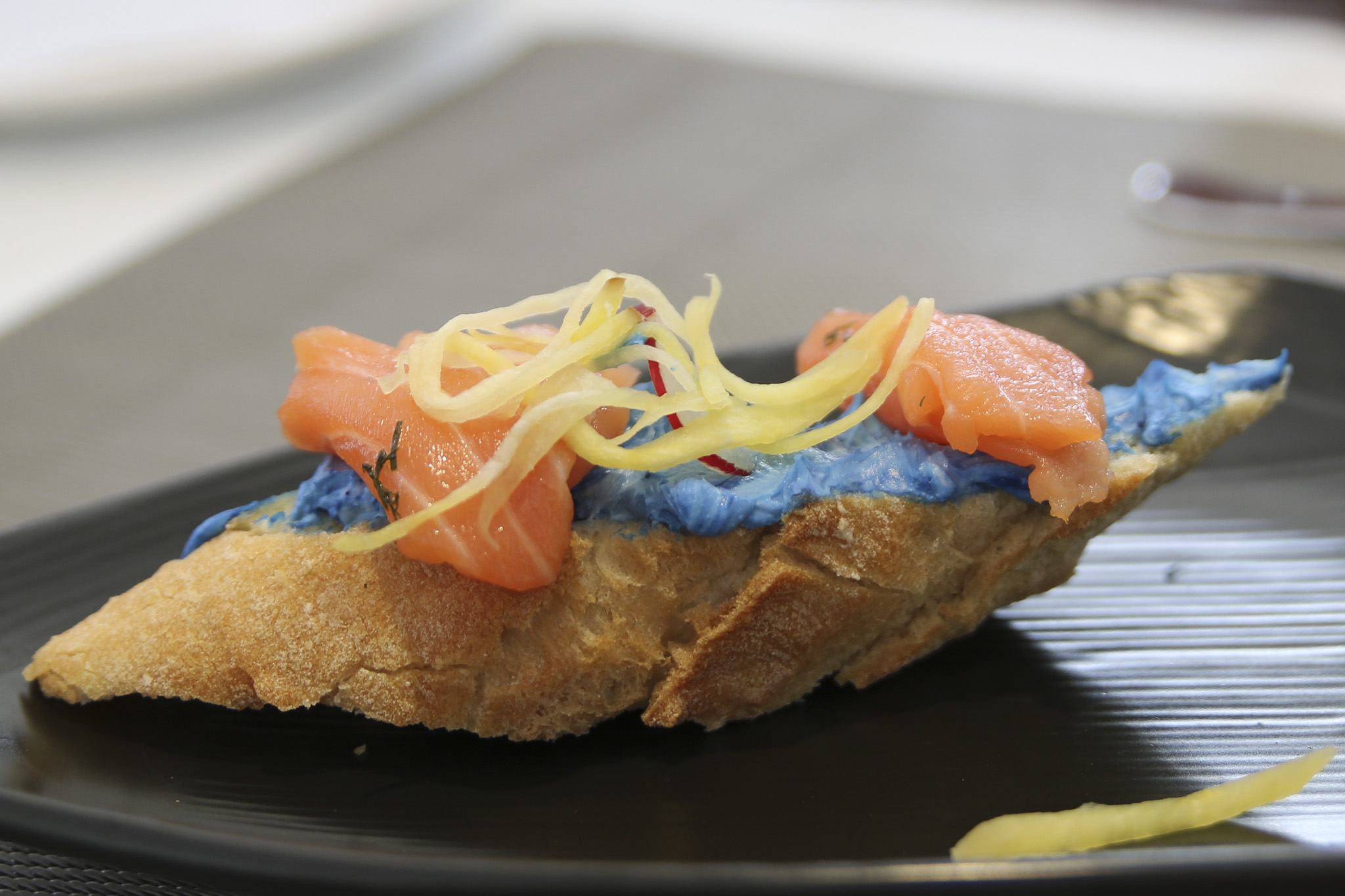
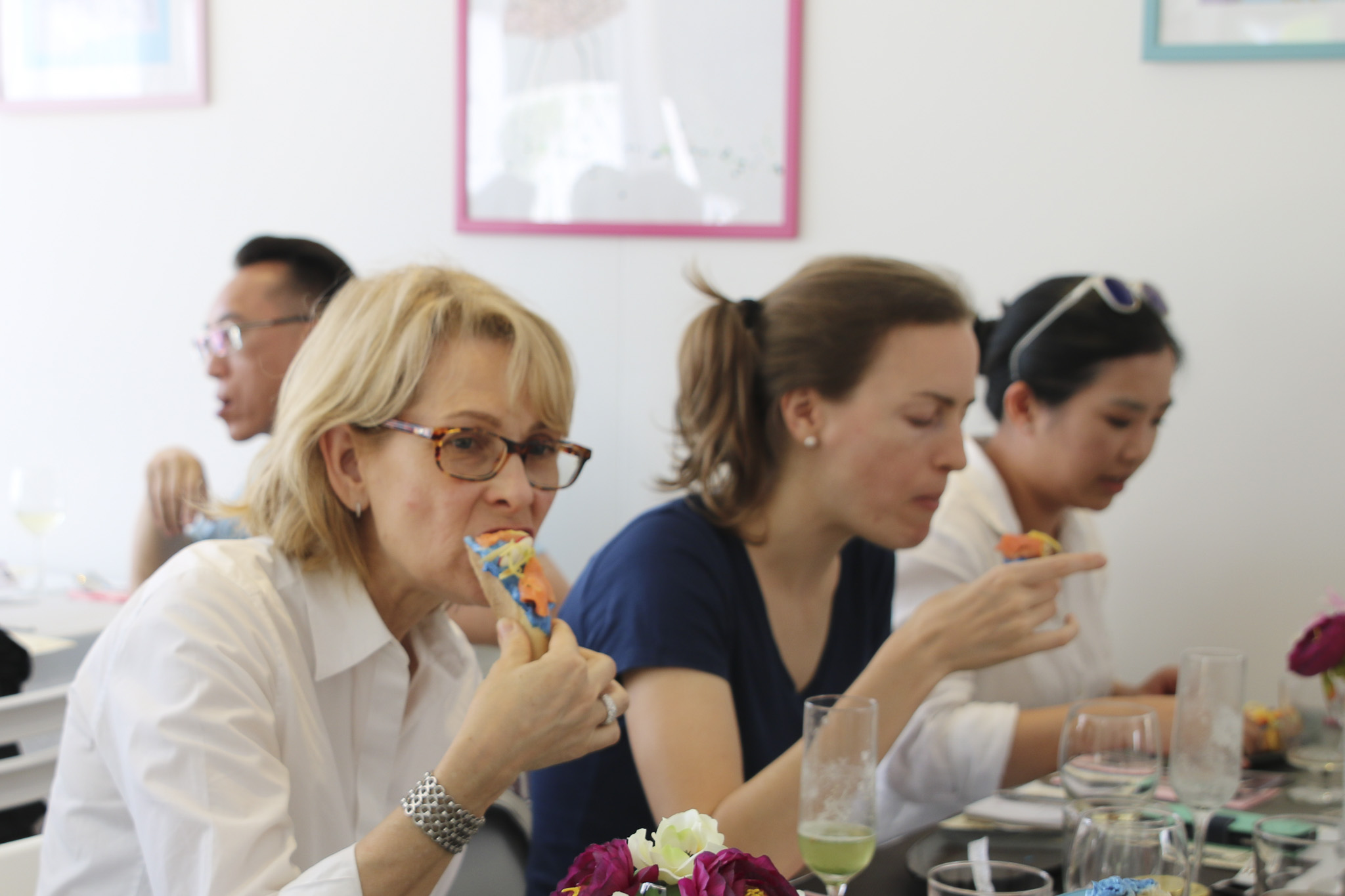
The third course was Crispy Euglena Charcoal Uni Hash Brown with Super Power Red Ranger Cream. It used both euglena and astaxanthin algae. The soft uni and crisp hash brown contrasted well.
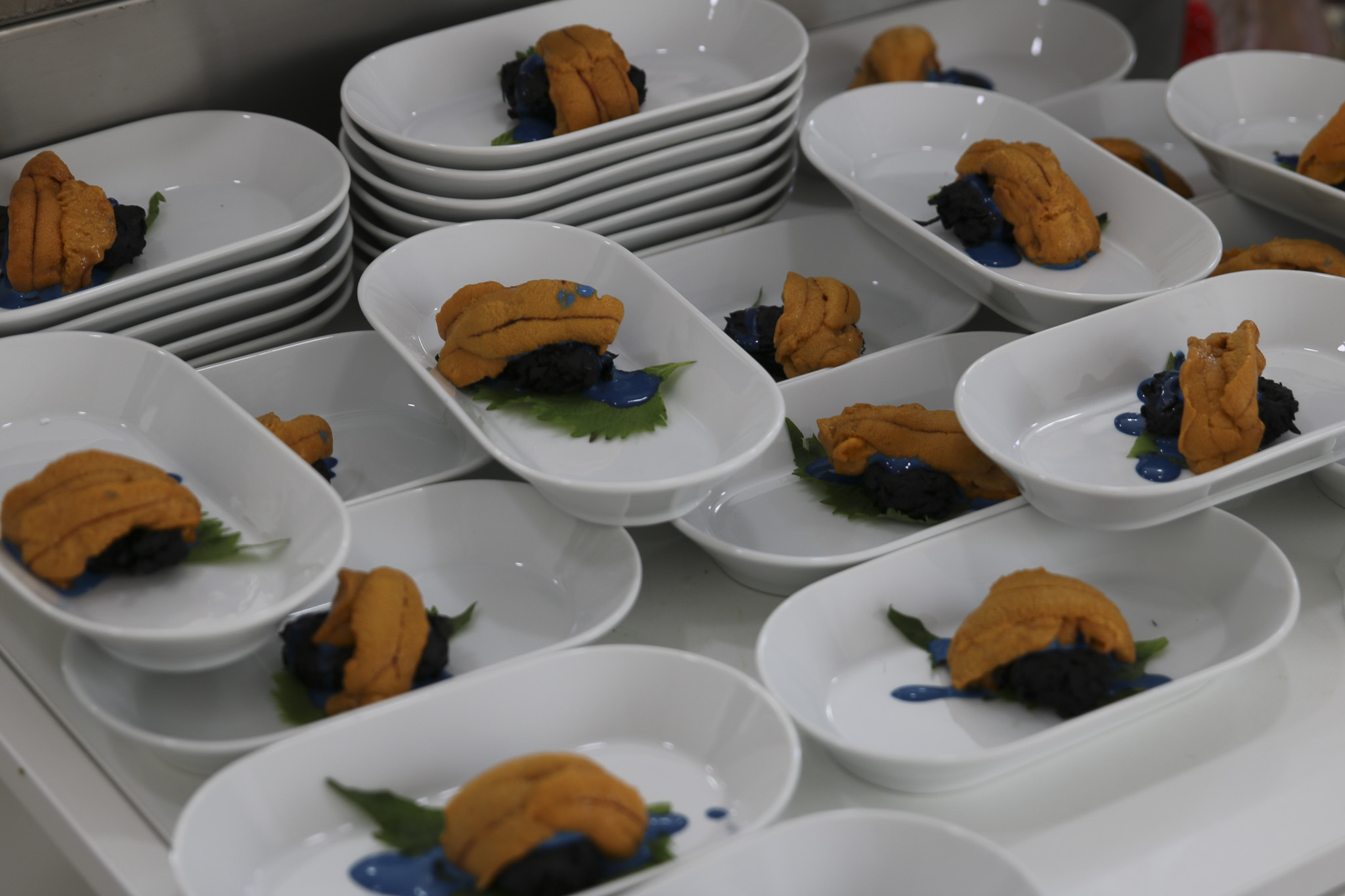
Happy Hormonal Soup was the fourth course, with the name suggesting that it could help balance your hormones and help you feel more motivated. It used green spirulina, with maca root, Atlantic wild caught crab, bamboo moss, coconut and orange needle mushroom. There was also fish bone bullion and it was the only dish that had a slight fishy taste, perhaps due more to the fish bone bullion than the algae. With micro algae sometimes having a reputation for a ‘fishy’ taste, Chef Justin was able to mask that taste but retain the nutrients of the algae in all the dishes, so I think it was the fish bone bouillon that I was tasting here.
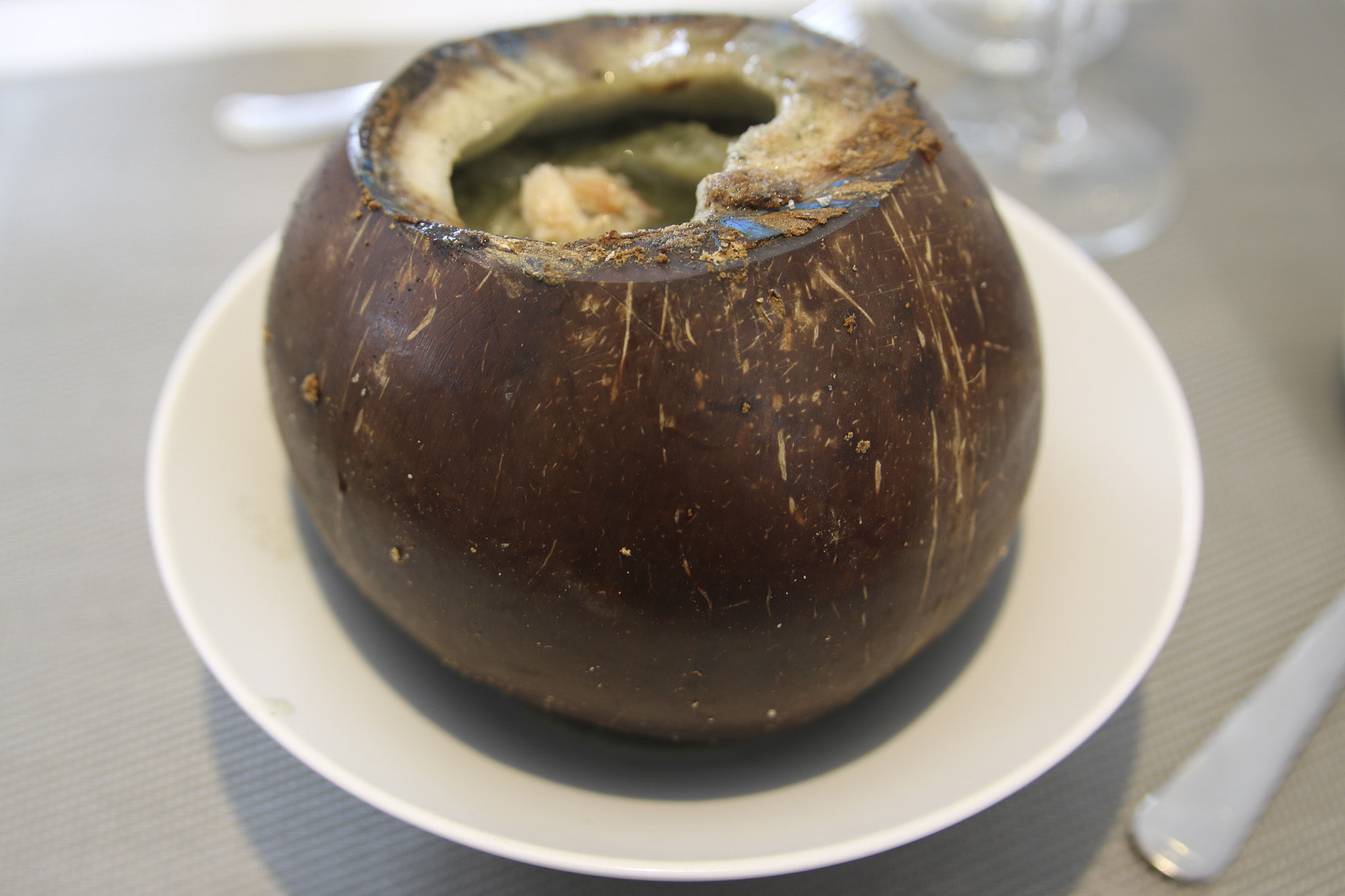
There were two options for the main course, Slow Braised Beef Cheek or Crispy Baja Fish Fillet. I chose the fish, but the person next to me who chose the beef which used euglena algae loved it. The fish also was great, using green spirulina algae and I especially loved the colorful cold slaws on the side. It was a beautiful dish to eat because of the rainbow colors of the algae.
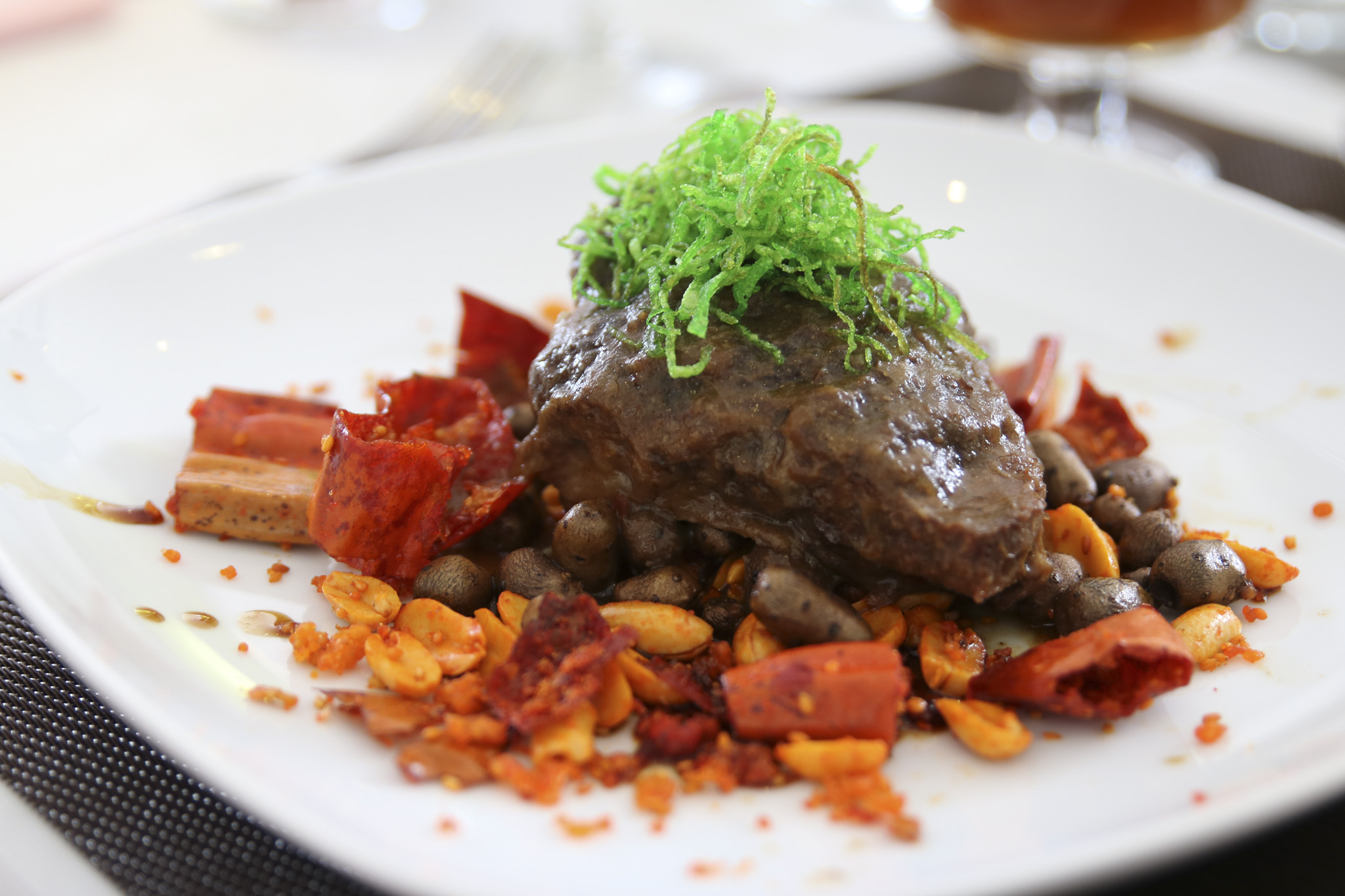
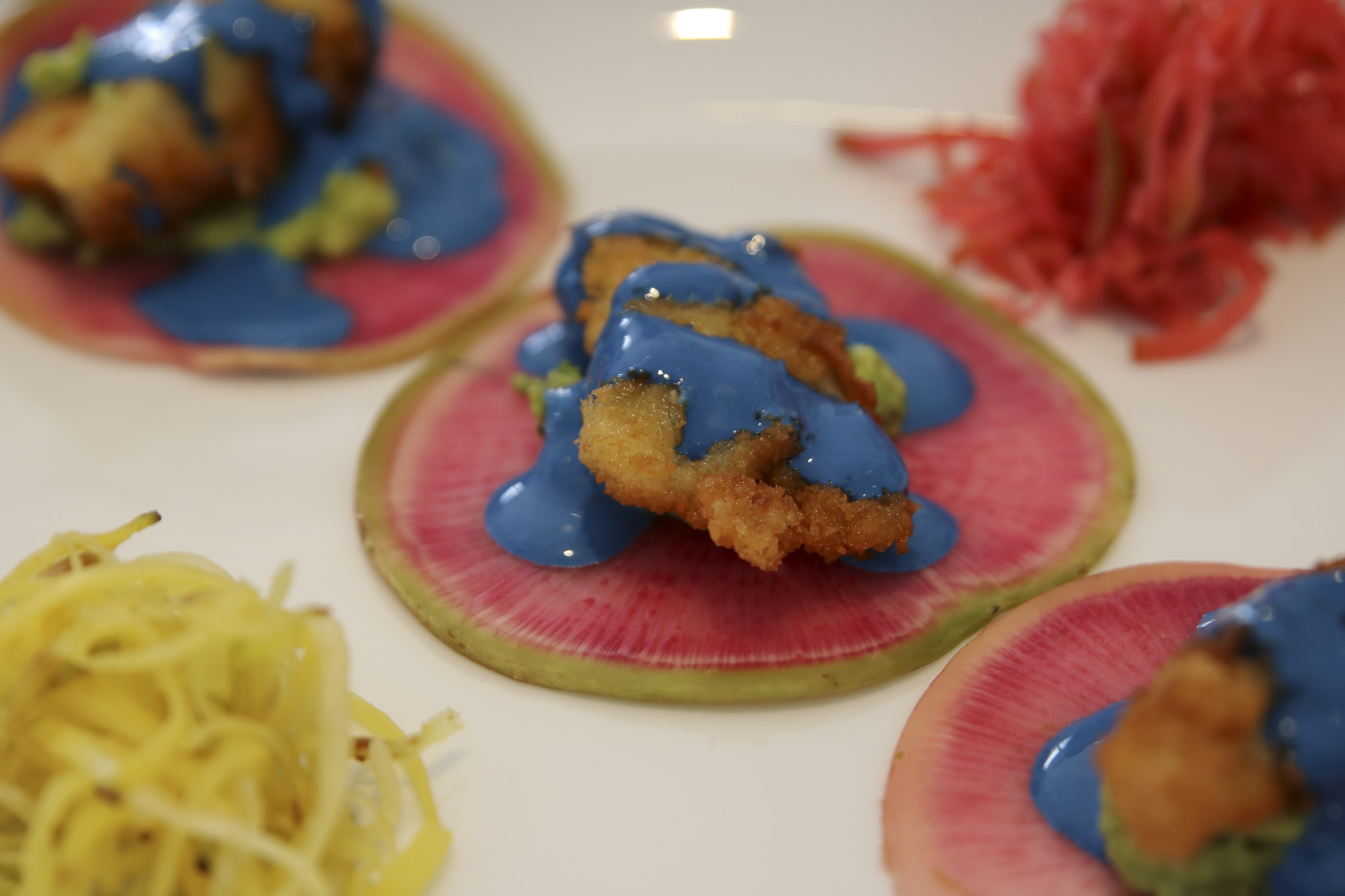
Course six, the last course consisted of Banana Coconut Banoffee Cake (blue spirulina algae) and Mango Mocha (green spirulina algae). Both were good, but to me the Banana Coconut Banoffee Cake was just fantastic.
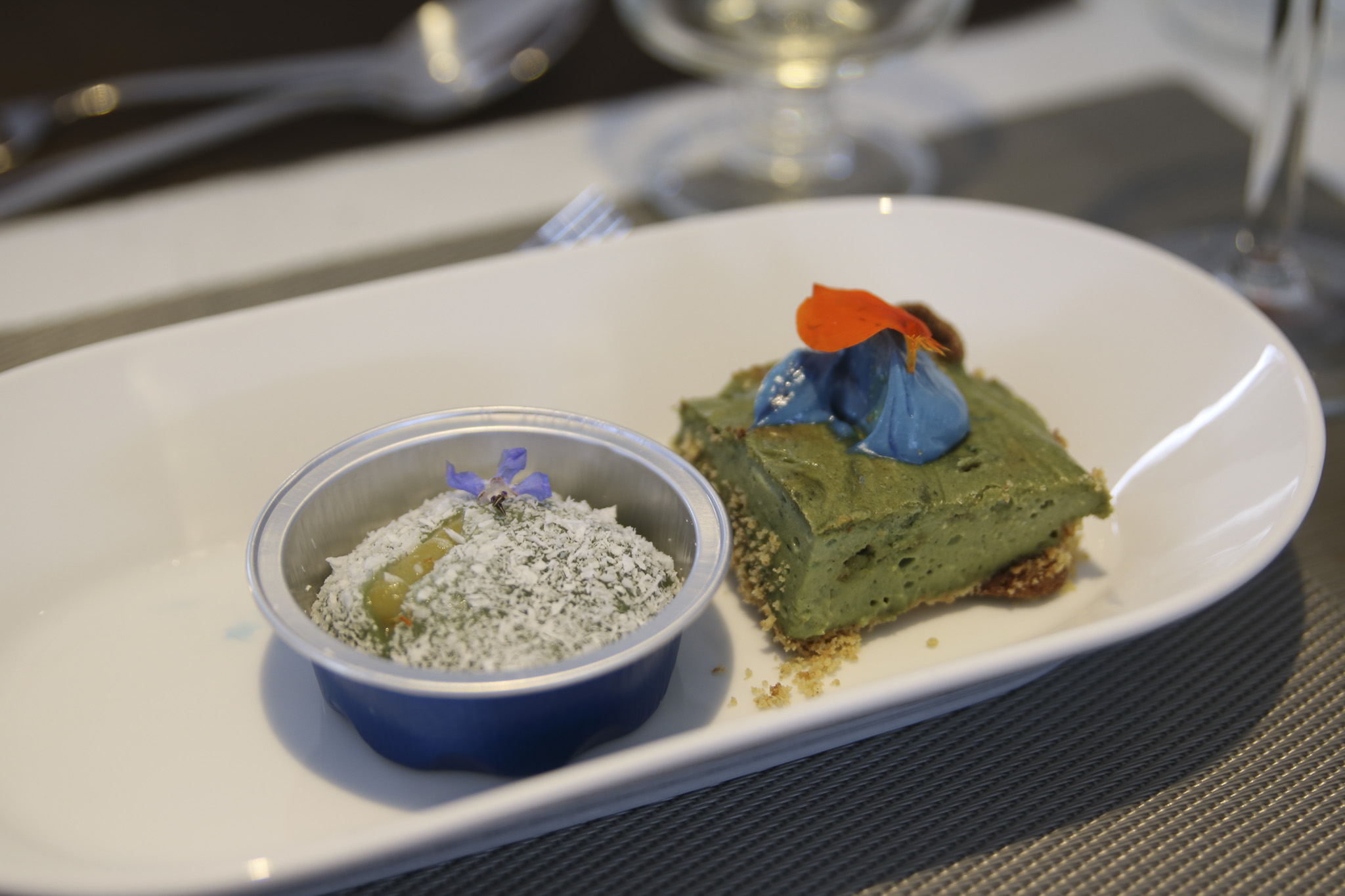
Chef Justin did a wonderful job with the art of well-presented dishes, healthy micro algae and other not-so-common ingredients. He retained the nutrients without compromises to the taste of the food.
